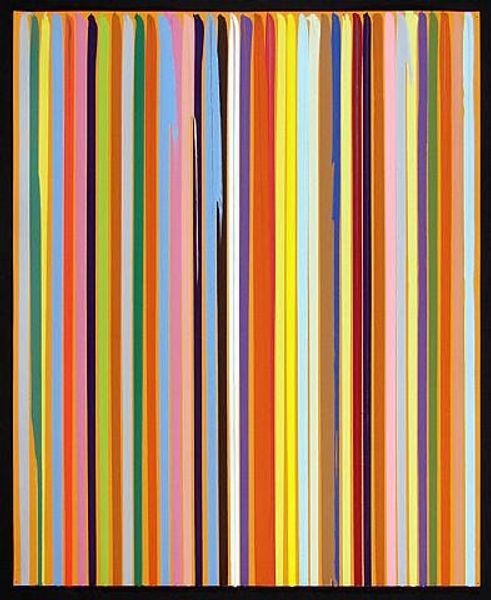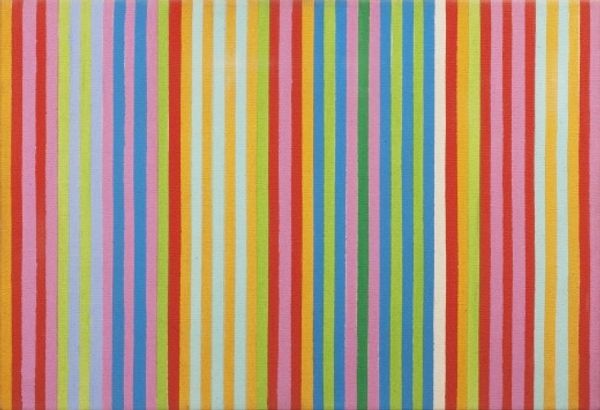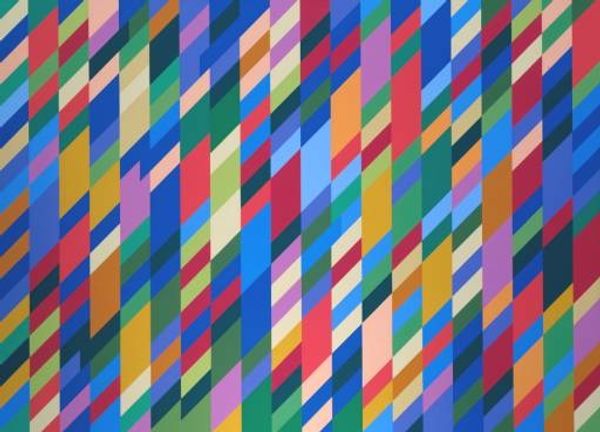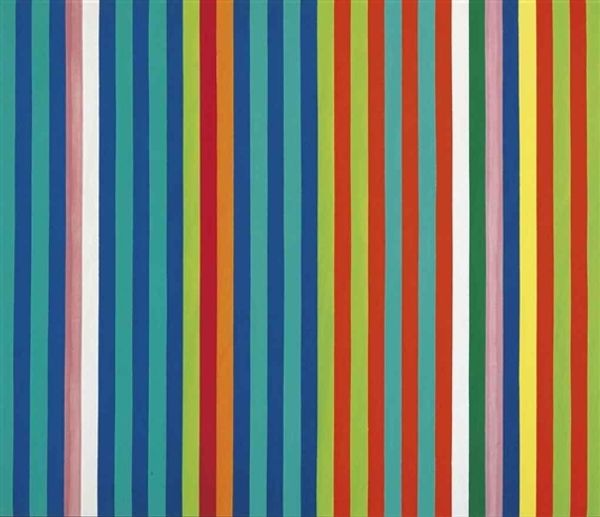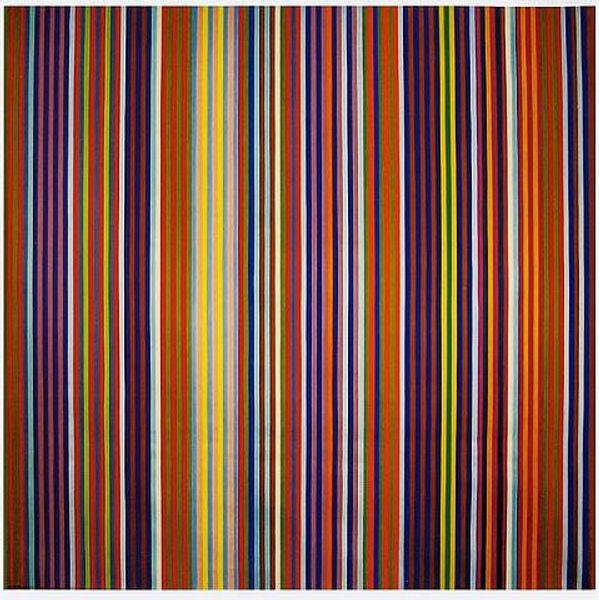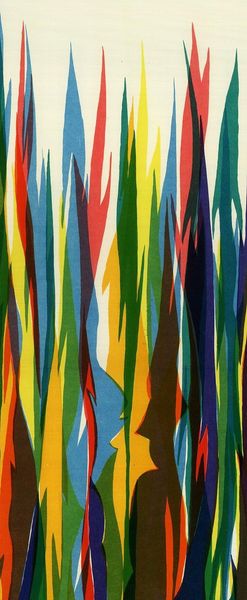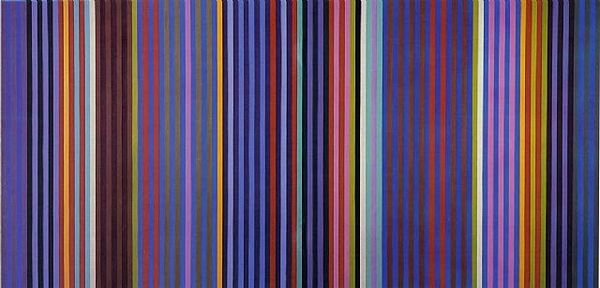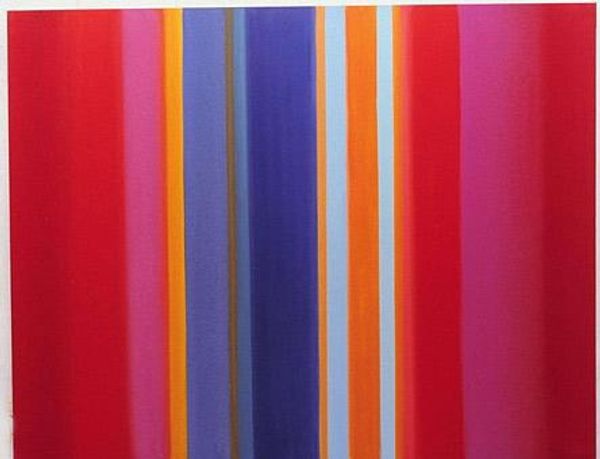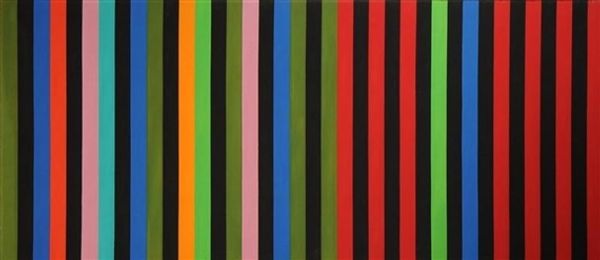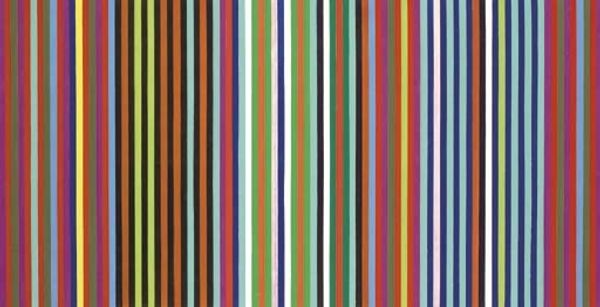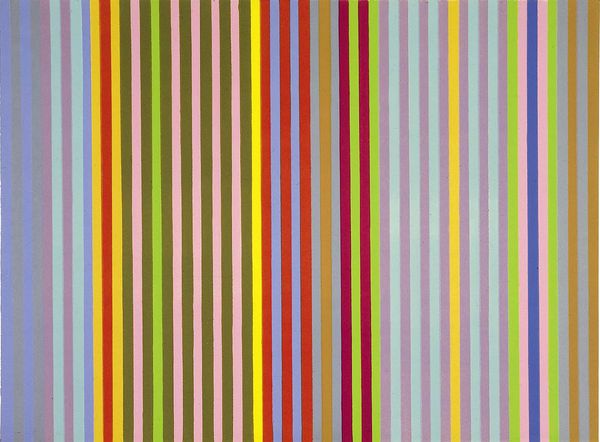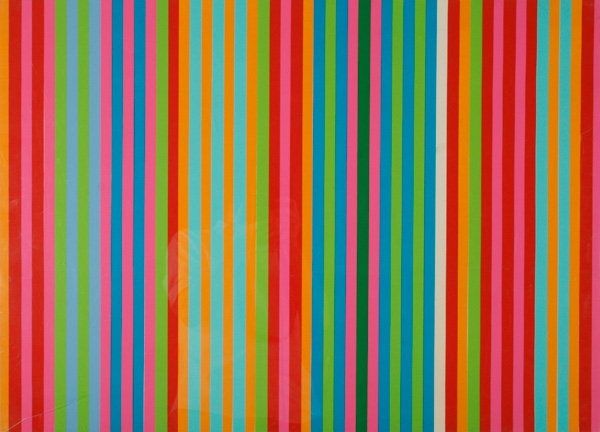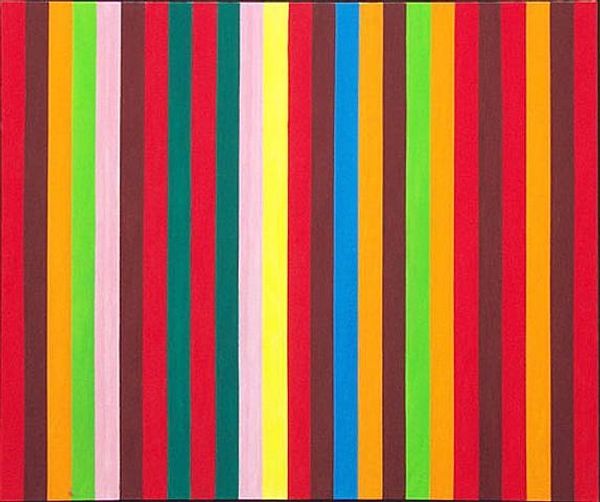
Copyright: Ian Davenport,Fair Use
Curator: Ian Davenport's "Puddle Painting: Magenta," created in 2008 using acrylic paint, immediately strikes me as a visceral embodiment of controlled chaos. Editor: Yes, I'm immediately drawn in by the almost hypnotic quality of the parallel lines before they resolve into these meandering, pooling forms at the bottom. The vibrant colors—though aesthetically pleasing—somehow feel precarious and volatile. What social undercurrents can we draw out here? Curator: I think we need to view Davenport’s work as a response to painting's historical obsession with intention. Think about how this challenges traditional notions of artistic control by highlighting gravity and the inherent properties of the paint itself. There’s a subversion of the male artist's ego here, I think. By relinquishing control, he allows for chance and fluid dynamics to participate in creation. Editor: That’s compelling. But there's also something incredibly calculated about the composition. The regularity of the dripping lines evokes something quite primal in me. These colours trigger distinct emotional and symbolic memories, some joyous, others…not so much. Can you really divorce that element from artistic intention? Curator: Perhaps it is impossible to truly separate intention from creation. Even in apparent randomness, societal frameworks seep in. Color in art can be traced to societal ideas and ideologies: from certain eras, or even from manufacturing developments related to consumer culture. This colour play mirrors and possibly critiques those connections. Editor: I find that fascinating! Each colour, contained, is then released and merges back into the ground: an uncontrolled force which also serves as foundation. We see containment undone; boundaries transcended. What does the puddle—this new symbolic space—offer in your opinion? Curator: Perhaps a commentary on how rigid structures can be undermined? The very act of painting transforms a surface and can question rigid identity and social constructs. Even something like 'taste' is dictated by dominant historical forces, with the 'puddle' reflecting back at us our own messy subjectivities. Editor: So, in essence, "Puddle Painting" acts as a visual prompt—nudging us to confront the tensions between order and freedom and high art vs. design within cultural expressions. Curator: Exactly! It’s more than mere aesthetics, it’s about questioning, isn’t it? Editor: Right, this has expanded my way of considering this work. Thanks for unveiling new pathways of seeing.
Comments
No comments
Be the first to comment and join the conversation on the ultimate creative platform.
